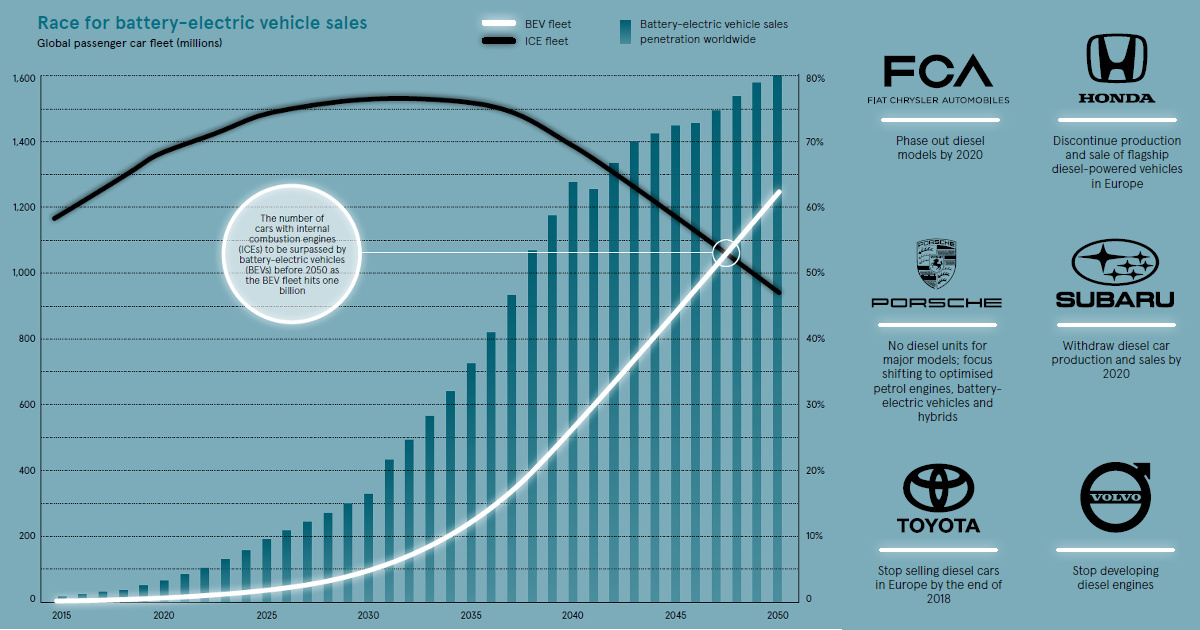China's Electric Vehicle Rise: Is The US Prepared To Compete?

Table of Contents
China's electric vehicle (EV) market is exploding. In 2022, China sold over 6 million EVs, representing a staggering 60% of global sales. This phenomenal growth presents a significant challenge to the United States, forcing a critical examination of the US's competitiveness in the burgeoning global EV industry. This article analyzes China's dominance, the US's current standing, and potential strategies for the US to effectively compete in this rapidly evolving sector. We will explore key factors including government policies, technological advancements, market access, and the crucial development of charging infrastructure.
H2: China's Dominance in the Electric Vehicle Market
China's leading position in the EV market isn't accidental; it's the result of a multi-pronged, strategically implemented approach.
H3: Massive Government Subsidies and Incentives: The Chinese government has poured billions into its EV industry, providing a significant competitive advantage. This support manifests in various ways:
- Tax breaks: Generous tax incentives for EV purchases and manufacturing.
- Research funding: Massive investments in research and development for battery technology and EV components.
- Purchase subsidies: Direct financial assistance to consumers buying electric vehicles.
- Local content requirements: Policies favoring domestic EV manufacturers and suppliers.
The scale of this investment is truly remarkable, with estimates reaching hundreds of billions of dollars over the past decade, significantly boosting domestic EV production and fostering innovation.
H3: Vertically Integrated Supply Chains: China controls a vast portion of the EV supply chain, giving it a significant cost advantage and greater control over production. This vertical integration extends from:
- Raw materials: Dominance in the mining and processing of crucial battery materials like lithium, cobalt, and nickel.
- Battery production: Home to many of the world's largest battery manufacturers, controlling a significant share of global battery production capacity.
- Component manufacturing: Leading in the production of key EV components like motors, inverters, and power electronics.
This comprehensive control translates into lower manufacturing costs and quicker adaptation to technological advancements. For example, CATL, a Chinese battery manufacturer, holds a substantial global market share, exceeding 30% in some estimates.
H3: Technological Innovation and Battery Technology: China is pushing the boundaries of battery technology, focusing on improvements that directly address consumer concerns:
- Solid-state batteries: Significant advancements in solid-state battery technology promise increased energy density, faster charging times, and enhanced safety.
- Improved energy density: Continuous improvements in energy density lead to longer driving ranges and reduced battery size.
- Cost reduction: Aggressive efforts to reduce battery production costs, making EVs more affordable.
Companies like BYD and CATL are at the forefront of these innovations, challenging established players in the global battery market.
H2: The US Electric Vehicle Landscape: Strengths and Weaknesses
While the US possesses strengths, significant challenges hinder its ability to compete effectively with China's EV juggernaut.
H3: US Government Policies and Investments: The US government, recognizing the need to bolster its domestic EV industry, has introduced several initiatives:
- Inflation Reduction Act (IRA): Includes significant tax credits and incentives for EV purchases and manufacturing, aiming to stimulate domestic production and consumer demand.
- Investment in charging infrastructure: Funding for the expansion of the national electric vehicle charging network.
- Research and development grants: Support for research and development in battery technology and other EV-related technologies.
However, these initiatives need to be significantly scaled up to match the sustained and massive investment seen from the Chinese government.
H3: Challenges for US Automakers: US automakers face considerable hurdles:
- Supply chain constraints: Reliance on global supply chains makes them vulnerable to disruptions and increases manufacturing costs.
- High manufacturing costs: Labor costs and regulatory compliance contribute to higher manufacturing costs compared to China.
- Consumer adoption rates: Consumer hesitancy due to factors like range anxiety, charging infrastructure availability, and upfront vehicle costs remains a significant obstacle.
These challenges have led to a smaller market share for US-made EVs compared to their Chinese counterparts.
H3: Infrastructure Development and Charging Networks: The US lags behind China in charging infrastructure deployment:
- Charging station density: China has a significantly denser network of public charging stations, providing greater convenience and accessibility for EV drivers.
- Charging network reliability: Ensuring a reliable and consistent charging experience is crucial for widespread EV adoption, an area where the US still needs improvement.
- Accessibility and equity: Addressing disparities in charging infrastructure access across different regions and communities is crucial for equitable adoption.
H2: Can the US Catch Up? Strategies for Competition
The US can still compete effectively, but it requires a concerted and strategic effort.
H3: Investing in Domestic Manufacturing and Supply Chains: Reshoring critical EV manufacturing and securing reliable domestic supply chains is paramount:
- Incentivize domestic production: Offering attractive tax incentives and subsidies to attract EV manufacturing to the US.
- Invest in critical mineral mining and processing: Developing domestic sources for battery raw materials to reduce reliance on foreign suppliers.
- Strengthen partnerships with allies: Collaborating with allied nations to secure stable supply chains and reduce dependence on China.
H3: Accelerating Technological Advancements: Increased investment in R&D is crucial for maintaining technological competitiveness:
- Focus on next-generation battery technologies: Investing heavily in research and development of advanced battery technologies like solid-state batteries.
- Support for innovative manufacturing processes: Developing more efficient and cost-effective manufacturing processes to reduce production costs.
- Collaboration between industry and academia: Fostering strong partnerships between industry and research institutions to accelerate innovation.
H3: Enhancing Consumer Adoption: Strategies to boost consumer demand include:
- Improve affordability: Making EVs more affordable through tax credits, subsidies, and technological advancements that reduce production costs.
- Address range anxiety: Expanding charging infrastructure and improving battery technology to increase driving range.
- Targeted marketing campaigns: Educating consumers about the benefits of EVs and addressing common misconceptions.
Conclusion: The Future of Electric Vehicle Competition
China's electric vehicle rise is undeniable, and its dominance in the EV market poses a significant challenge to the US. While the US possesses strengths, significant hurdles remain, including supply chain vulnerabilities, high manufacturing costs, and a comparatively less developed charging infrastructure. To compete effectively, the US must significantly increase investment in domestic manufacturing, accelerate technological advancements, and implement strategies to enhance consumer adoption. The future of the global electric vehicle market depends on addressing these challenges proactively. Learn more about China's electric vehicle rise and its implications for the future of transportation. Engage with the ongoing discussion and delve deeper into electric vehicle policies, battery technology, and the intensifying competition within the automotive industry.

Featured Posts
-
 Canelo Vs Golovkin When Does The Fight Start Full Fight Card Breakdown
May 04, 2025
Canelo Vs Golovkin When Does The Fight Start Full Fight Card Breakdown
May 04, 2025 -
 One Last Fight Ufc Legend Returns From Hiatus On May 3rd
May 04, 2025
One Last Fight Ufc Legend Returns From Hiatus On May 3rd
May 04, 2025 -
 Louisiana Derby 2025 Betting Odds Contenders And Road To The Kentucky Derby
May 04, 2025
Louisiana Derby 2025 Betting Odds Contenders And Road To The Kentucky Derby
May 04, 2025 -
 West Bengal Weather Rain Forecast For North Bengal Region
May 04, 2025
West Bengal Weather Rain Forecast For North Bengal Region
May 04, 2025 -
 Gigi Hadid Offers Rare Perspective On Bradley Cooper
May 04, 2025
Gigi Hadid Offers Rare Perspective On Bradley Cooper
May 04, 2025
